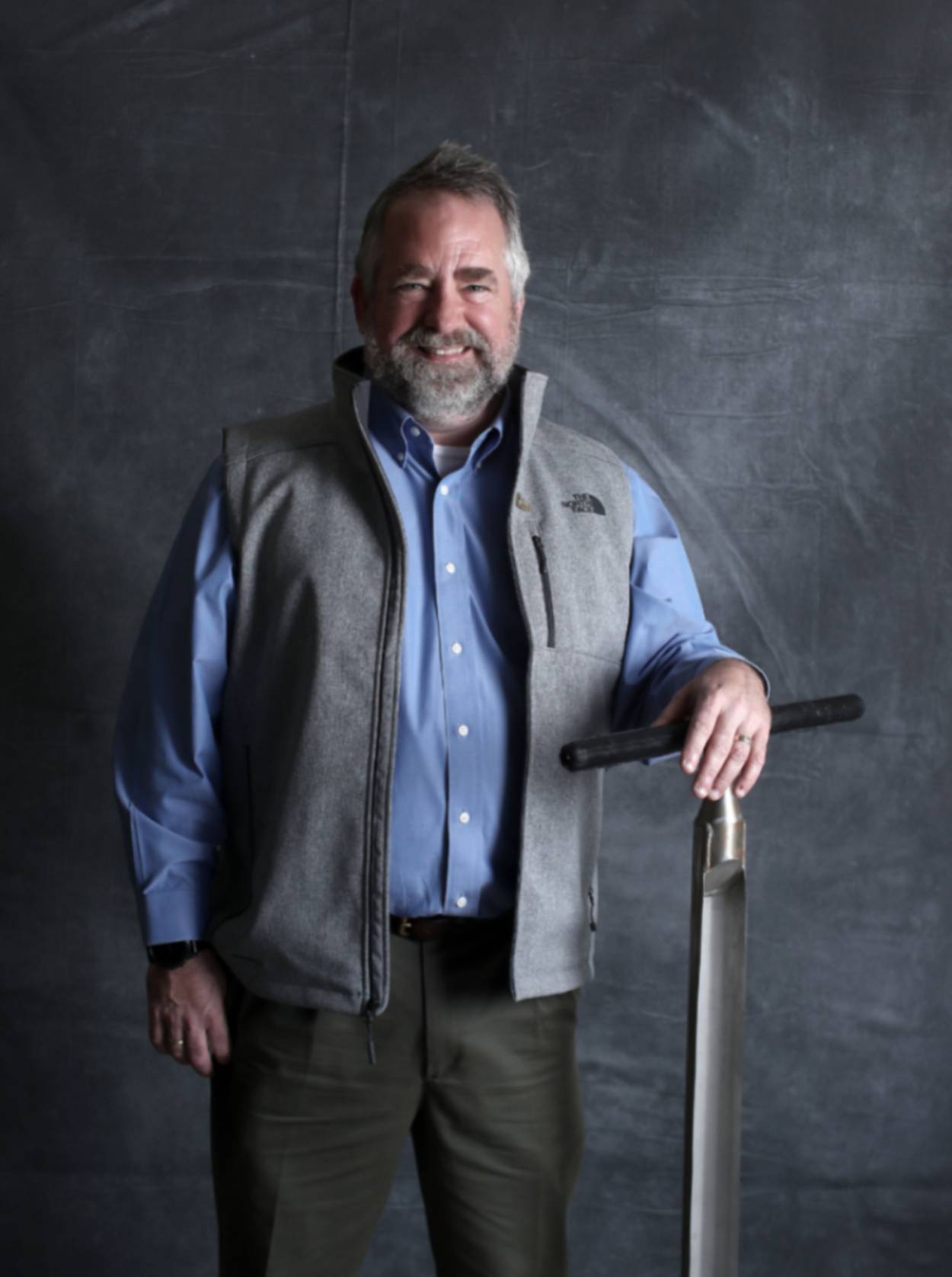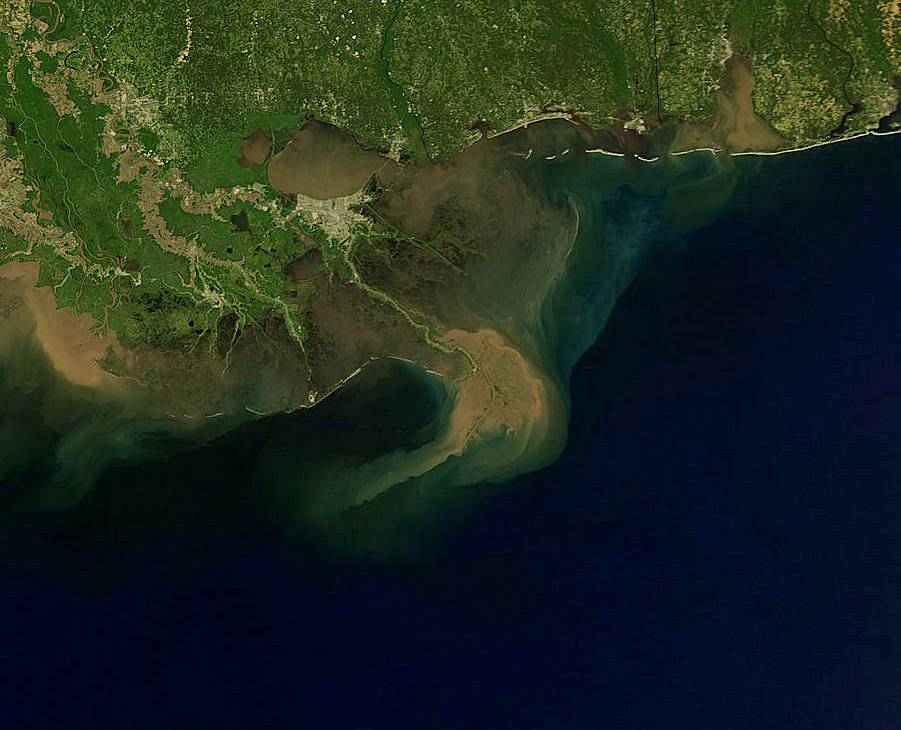Saving the Mississippi Delta
When Samuel Bentley, professor and Billy and Ann Harrison Chair in Sedimentary Geology, made the transition from an administrative role to re-engage in research, he did so on a grand scale.
The day after stepping down as Vice President for Research and Economic Development at LSU, Bentley received news of being awarded $3.8 million from the Bureau of Ocean Energy Management. The five-year grant is dedicated to studying underwater mudslides offshore of the Mississippi Delta, which pose a risk to the seabed energy infrastructure. Just over a year later, he now co-leads a 15-member consortium known as The Mississippi River Delta Transition Initiative — a $22 million effort awarded by the Gulf Research Program (GRP) of the National Academies of Sciences, Engineering and Medicine.

Samuel Bentley, Professor and Billy and Ann Harrison Chair in Sedimentary Geology
Also known as MissDelta, the consortium is co-led by Mead Allison, chair of Tulane University’s Department of River-Coastal Science and Engineering, and a longtime colleague of Bentley. Over the past decade, research conducted by both Bentley and Allison’s groups has unveiled a significant issue threatening the lower Mississippi: the retreat of the lowermost delta both above and below water. This transformation in the course of the river has significant implications for navigation, the national economy, and global food security. With the delta’s future hanging in the balance, researchers are embarking on a collaboration to predict what the Birdsfoot Delta of the Mississippi will look like in the next 100 years, under different management scenarios.
“Each of these projects represents a once-in-a-career kind of effort. Having both of them converge within our research community simultaneously is unprecedented in the field of coastal science and engineering.”
Luck, they say, favors the prepared. Bentley emphasizes the decades of dedication by their research group, a key factor in securing federal funding for their endeavors. “This multi-university team has dedicated decades to building the foundational science and engineering knowledge that made us worthy recipients of funding from these federal agencies.”
Bentley foresees that insights gained from both grants will enhance policy decisions regarding the management of river sediment, navigation, and socio-economic activities in the lower Mississippi region. The team aims to conduct field research to bridge knowledge gaps related to the local environment and affected communities. The overarching goal is to create numerical models predicting future outcomes for the delta, including associated communities and economies, considering various environmental and management scenarios. Input from government, industry, and community representatives will play a crucial role in guiding observations and modeling at each stage, fostering collaborative solutions. Bentley’s team recently employed predictive modeling tools to assess the Old River Control Structure (ORCS), which regulates a 70–30% flow split between the Mississippi River and the Atchafalaya River. Their findings underscore concerns about the long-term sustainability of the current ORCS management plan, considering both engineering and cost perspectives.
As it stands, the ongoing transformation of the delta poses a threat to the daily flow of goods, totaling around $300 million, in and out of the Mississippi River. Furthermore, approximately 60% of the nation’s crucial grain exports, vital for both domestic and international food sources, depend on the Mississippi River route to the Gulf of Mexico.

The Birdfoot Delta, at the southern end of the Mississippi River in Louisiana, gets its name from its bird's foot shape on a map.Photo Credit: LANCE/EOSDIS Rapid Response Team
MissDelta will not only apply cutting-edge research to tackle socio-economic issues in Louisiana but will also contribute to increasing workforce diversity. A one-third of the total effort is dedicated to establishing a more robust foundation for diversity in coastal sciences, engineering, and design across institutions in the northern Gulf Coast. “I find that an especially exciting aspect of this grant, beyond research, is fostering diversity in STEM fields. Our collaboration involves six historically black colleges and universities in the region, with only one currently having any Coastal Research Program. MissDelta and the GRP are wholeheartedly committed to enhancing human diversity in this field within the region, ensuring that the community of scientists and engineers reflects the populations they serve,” says Bentley. The initiative will also involve educational activities that span from classroom sessions to advanced field activities, encompassing students from grade 6 to graduate levels.
As Bentley immerses himself in researching the Mississippi Delta, a particular memory serves as part of his motivation, “I remember a moment early in my career when I overheard my sons talking with their friends. One of them asked, ‘What does your dad do?’ and one of my sons replied, ‘Well, he’s trying to save the Mississippi Delta.’ And that was immensely satisfying and gratifying.” Bentley now holds onto that memory as a reminder of the profound impact of his work—not only within the delta but also in shaping the world his children and many others are destined to inherit.
Contact
Bianca Scolaro
Research Communications Specialist
LSU College of Science
225-578-2321
bscolaro@lsu.edu